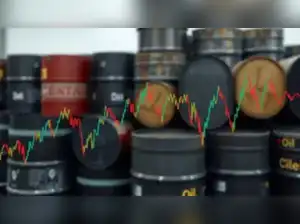 ETMarkets.com
ETMarkets.comThe main reason oil prices are expected to decline is the steady rise in supply by the OPEC+ alliance. This group, which includes the Organization of the Petroleum Exporting Countries and its allies like Russia, is steadily reversing the deep production cuts made during the pandemic. The August increase of 548,000 barrels per day was larger than expected and follows similar monthly hikes this year. Goldman Sachs analysts, led by Daan Struyven, noted that the production ramp-up shows OPEC+ is trying to regain lost market share while also managing internal cohesion. According to Struyven, this move also puts pressure on U.S. shale producers, who face tighter margins with falling prices. Despite resilient demand—especially from China, the world’s largest oil importer—the increasing supply is expected to outweigh consumption growth by late 2025.
Goldman Sachs projects Brent crude will average $59 in the fourth quarter of 2025 and dip further to $56 by 2026. Meanwhile, BNP Paribas revised its year-end Brent forecast down by $5 to $55 per barrel. However, BNP expects prices to recover in 2026 as supply growth slows down both within OPEC and among non-OPEC producers.

As of Monday, West Texas Intermediate (WTI) crude was trading around $67 per barrel, while Brent crude, the global benchmark, was slightly higher at $69 per barrel. Both contracts showed minor gains—less than 1%—but the broader trend still points to a slow and steady decline. Oil prices briefly surged to nearly $80 per barrel last month during the conflict between Israel and Iran. At the time, some analysts warned of worst-case scenarios where crude could hit $120 to $130 per barrel if the situation escalated. However, those fears eased quickly after President Trump announced a ceasefire late last month, removing much of the war-related risk premium. Since then, oil prices have cooled significantly. Year-to-date, WTI is down about 3%, while Brent has dropped roughly 5%, reflecting easing geopolitical risk and stronger supply outlook. Despite the bearish price forecasts, demand remains firm, particularly from key markets like China. Dennis Kissler, senior vice president at BOK Financial, noted that “the supply picture definitely looks to be elevating; however, the stronger demand is remaining above expectations as well, hence the choppy trade.”
This tug-of-war between rising supply and steady demand is creating a volatile environment. While long-term price forecasts lean lower, near-term movements may continue to fluctuate based on regional demand, inventory levels, and short-term geopolitical developments.
Analysts do see a silver lining down the road. BNP Paribas believes the oil market could bounce back in 2026, mainly because both OPEC and non-OPEC nations are likely to slow production growth. This slowdown, combined with a possible uptick in demand, could bring balance back to the market and support higher prices.However, that recovery depends on several moving parts—from global economic health to energy policy shifts and investment in renewables. For now, the forecast remains bearish, with Brent likely staying below $60 for the next several quarters.
What should oil watchers look out for next?
All eyes will be on the next OPEC+ meeting and September's production update. If the group sticks to its current path and continues boosting supply, oil could slide further below $60. But if demand surprises to the upside or supply growth slows unexpectedly, prices could stabilize sooner than expected.For now, traders and consumers alike should prepare for a market that’s shifting fast—fueled by policy, politics, and production decisions that could reshape the energy landscape over the next year.
Because OPEC+ is increasing oil supply while demand is steady, pushing prices down.
Analysts expect Brent crude to average around $59 in late 2025 and $56 in 2026.
Read More News on
(Catch all the US News, UK News, Canada News, International Breaking News Events, and Latest News Updates on The Economic Times.)
Download The Economic Times News App to get Daily International News Updates.







_1751880097.jpeg)


